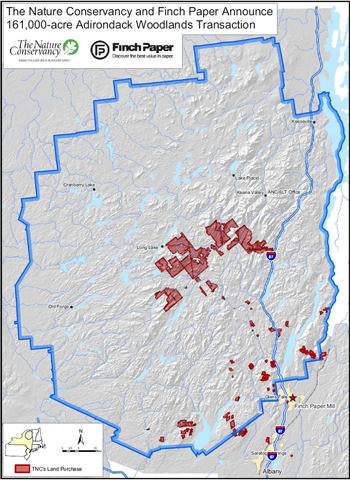Evaluating a Working Forest: Integrated Monitoring of the Former Finch, Pruyn Lands

Large, intact forests in the northeastern U.S. provide habitat for diverse species and ecological services such as timber production, water purification, and recreation. In the 1980s, forest products companies, driven by economic changes, began selling large tracts of land to timberland investment management organizations and real estate investment trusts. In the Northeast, less than 2.3% of timberlands sold between 1980 and 2005 were purchased by conservation organizations or public agencies. These efforts are constrained by limited funds and concerns about “locking up” forest land, economic and social justice, and cultural continuity in rural communities.
The Finch Pruyn Working Forest (FPWF), 161,000 acres in the Adirondack Park of New York State, is the result of a recent land deal by The Nature Conservancy that seeks to reconcile interests in environmental protection, timber production, recreation, and economic development. NSRC researchers reviewed the conservation easement, forest management plan, press releases, and media coverage. They traced redistribution of property rights to understand formal allocation of rights and responsibilities and interviewed individuals from environmental organizations, public agencies, local government, forest products industry, recreation groups, and local residents.
The case highlights opportunities to combine private and public sector investments and allocate property rights in novel ways. It shows great potential as a model for achieving multiple-use and fostering common ground among traditionally opposed stakeholders.
